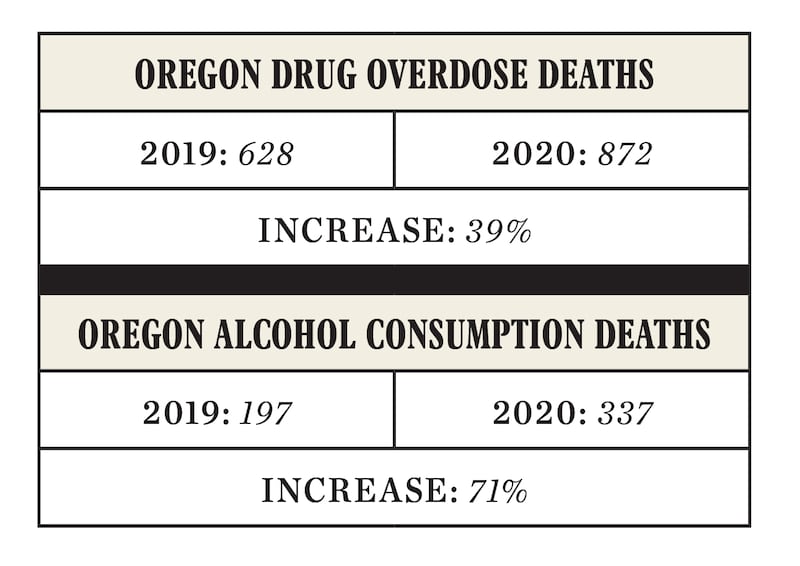The Oregon Liquor and Cannabis Commission sold a lot more liquor in 2020 than it did before the pandemic—about 12% in dollar terms and 5.4% in volume, despite the widespread closure of bars and restaurants for parts of the year.
Lawmakers and the OLCC did their part to keep Oregonians lubricated, loosening the state’s notoriously strict liquor laws to allow cocktails to go and curbside delivery. All that made Mike Marshall, executive director of the advocacy group Oregon Recovers, wonder what the outcomes were.
It’s not pretty. State and national increases in drug overdoses during the pandemic have been well publicized but, according to the Oregon State Medical Examiner’s Office, alcohol fatalities rose even more.
The ME divides alcohol-related deaths into three categories: acute effect of alcohol as the sole cause; alcohol plays a role in combination with other drugs; and deaths due to chronic alcohol use. Most of the 2020 deaths were from chronic use.
“During COVID, the Oregon Legislature and the OLCC disregarded public health warnings and worked overtime to increase alcohol sales,” Marshall says. “They made no effort—none—to advise people on the dangers of consuming alcohol while isolated at home.”
Marshall notes that even as drinking increased, the number of treatment beds and other services for people battling substance abuse declined as a result of social distancing requirements and personnel shortages at treatment centers.
“Virtually all of these deaths were avoidable,” he says of the alcohol-related fatalities.
OLCC spokesman Bryant Haley says his agency seeks a balance that will “provide for public health protections while allowing Oregon businesses to safely conduct their operations.”
Charles Boyle, an aide to Gov. Kate Brown, says she worked with lawmakers this year to secure $350 million in new behavioral health funding and additional dollars for substance abuse disorder but, he acknowledges, “much work remains to be done.”
Clarification: This story has been updated to include the increase in volume of liquor the OLCC sold in 2020 in addition to the increase in the dollar value of sales.


